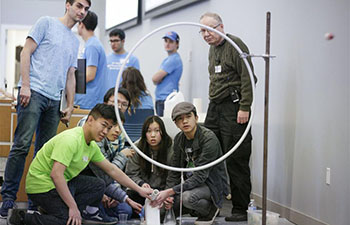WASHINGTON, March 11 (Xinhua) -- Muscle loss in old age comes from changes in the nervous system, but the muscle's own protective mechanism may rescue or recover some of the nervous system, new research shows.
The findings can increase the prospects of reversing the condition in the future, according to the research published on Sunday in the Journal of Physiology.
The study has shown that by the age of 75 individuals typically have around 30 to 50 percent fewer nerves controlling their legs, leaving parts of their muscles disconnected from the nervous system, which makes them functionally useless and so they waste away.
However, healthy muscles have a form of protection, in which surviving nerves can send out new branches to rescue some, but not all, of the detached muscle fibers.
This protective mechanism is most successful in older adults with large, healthy muscles. When the internal protective mechanism is not successful and nerves are unable to send out new branches, it can result in extensive muscle loss, according to researchers.
This can result in a condition called sarcopenia, which affects estimated 10 percent to 20 percent of people aged over 65 years.
The researchers still do not understand why the connections between muscles and nerves remain healthy in some people and not in others.
They are looking at whether regular exercise in middle- and older-age slows the process of muscles becoming disconnected from the nervous system, or improves the success of nerve branching to rescue detached muscle fibers.
The research carried out by Manchester Metropolitan University in conjunction with University of Waterloo, Ontario, and University of Manchester.
Then they used enhanced electromyography to record the electrical activity passing through the muscle to estimate the numbers and the size of surviving nerves available to rescue muscle fibers.
Jamie McPhee, the senior author on the research and a professor with Manchester Metropolitan University, said: "Our challenge now is to find ways to increase the success of nerve branching to rescue detached muscle fibers and thereby reduce the numbers of older people in our neighborhoods with low muscle mass and muscle weakness."













